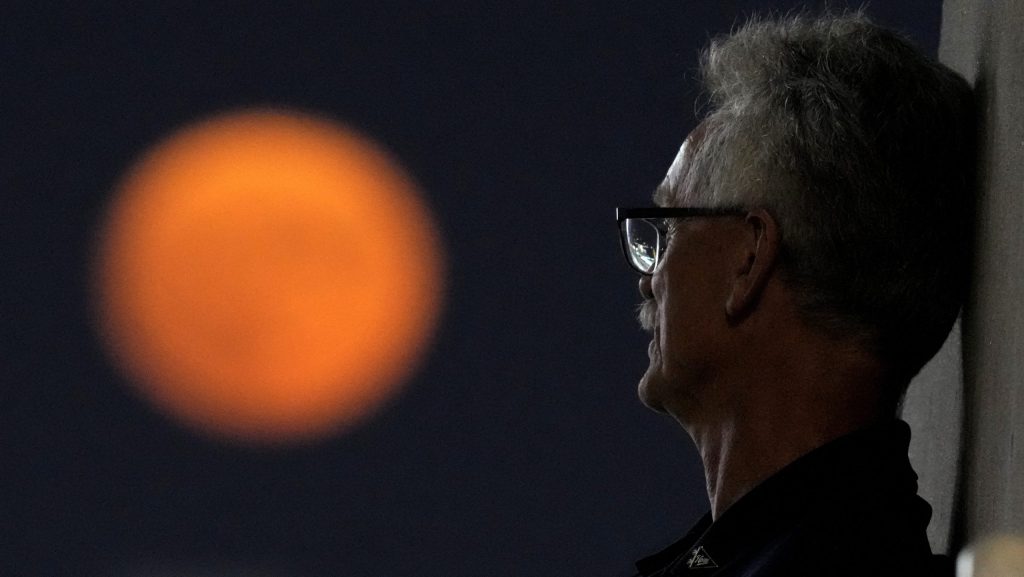A rare super blue moon will appear on Monday night. What you need to know

Posted August 19, 2024 8:04 am.
Last Updated August 19, 2024 11:16 am.
Look up to the sky. It’s a rare supermoon that occurs, on average, once every 10 years.
The super blue moon will light up the sky on Monday night, a combination of two lunar phenomena that occur when the moon is at its closest point to Earth in its orbit.
When observed, the moon will appear about 30 per cent brighter and 15 per cent larger than it does at its farthest point—the next super blue moon will not happen until January 2037.
Dr. Ilana MacDonald, the outreach coordinator for the Dunlap Institute for Astronomy and Astrophysics in Toronto, shared some insight into the phenomenon.
“The best way to view a full moon, really, is just with the naked eye,” said Dr. MacDonald. “If you happen to have a nice set of binoculars, you can, obviously, see a few more details on the moon’s surface. No matter how much light pollution you have, you can always see the moon.
“Of course, if it’s a cloudy day, you won’t see anything,” added Dr. MacDonald.
Toronto will likely witness the super blue moon, as mainly clear skies are expected on Monday night. However, barring clear skies, you can still view it on Tuesday night, too.
How do supermoons compare?
There’s a quartet of supermoons this year.
October’s supermoon will be the year’s closest, at 357,364 kilometres from Earth, followed by November’s supermoon, at 361,867 kilometres.
Scientists use supermoons to study the moon’s orbit, gravitational effects, and the potential impacts on Earth. They often provide valuable data for understanding lunar cycles and their influences on the planet.
Despite the name, a blue moon doesn’t appear blue in colour. A seasonal blue moon occurs about once every two to three years, depending on how the lunar cycle aligns with the calendar year.
A monthly blue moon happens about once every two to three years, depending on the timing of the full moon in the calendar months. The lunar cycle is roughly 29.5 days.
Some recent notable supermoons include the “Super Blood Moon” of January 2018, which combined a supermoon with a total lunar eclipse.








